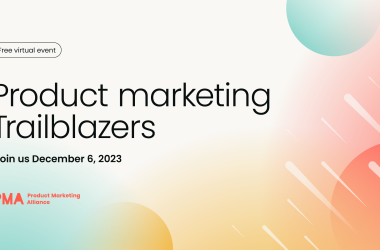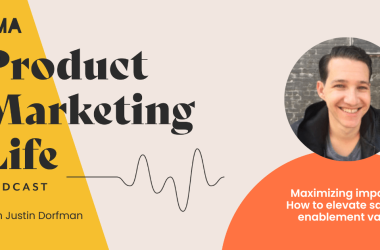The larger and more complex your company is, the more challenging it can be to introduce continuous discovery. It’s not just about training people to conduct interviews, use opportunity solution trees, or test assumptions—though those are all important activities—it’s also about convincing them of the value of these activities and getting the people they work with on board as well.
Sandrine Veillet’s Product in Practice story perfectly exemplifies this. While Sandrine was convinced of the impact continuous discovery could have at her organization, her task wasn’t as simple as just introducing the concepts. She took a multi-step, methodical approach to introduce continuous discovery, including enrolling a group of product people in the Master Class, having those participants coach and train others, and bringing stakeholders along for the journey.
We also appreciate Sandrine’s candor in admitting that this process hasn’t always been easy. She shares some of the challenges she’s faced and some of the ways she sees discovery being applied unevenly. As always, our goal with this story is not to paint a rosy picture of reality, but to show you how real product teams are making progress on their continuous discovery journey.
Do you have a Product in Practice story you’d like to share? You can submit yours here.
Meet the Continuous Discovery Champion, Sandrine Veillet
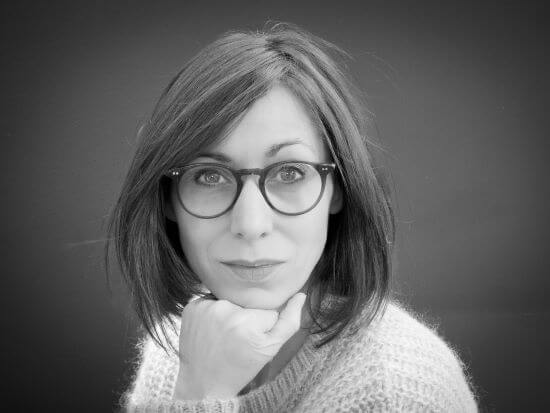
Meet Sandrine Veillet, Vice President of Global Product at WebMD.
Sandrine Veillet is the Vice President of Global Product at WebMD. As the head of Medscape Professional Network Product Management, she defines and leads the vision and strategy for their healthcare professionals’ suite of products and manages global teams. Sandrine joined WebMD when it acquired her previous company, Aptus Health.
Sandrine’s Early Days at WebMD and Introduction to Continuous Discovery
When Sandrine first joined WebMD in November 2019, she identified a number of challenges with the way product teams were working. While teams were organized as cross-functional scrum teams, there was no core product trio that would work on discovery.
“It was more like the old-school model where a product manager gets a business requirement,” says Sandrine. A stakeholder would ask a product design team for a mockup and they would groom the tickets for that specific feature with the tech team. “It was very waterfall as opposed to working together on coming up with the right solution,” she adds.
One of Sandrine’s first goals was to build a strong foundation for the product team, starting with a product vision—something that didn’t exist at the time.
She soon identified another area for improvement: “I realized that a lot of the product people were merely taking what stakeholders were asking them and just pushing it into a roadmap. They were just not empowered to make the right decisions in terms of how to enhance their product.”
It was around this time that Sandrine discovered one of Teresa’s talks on YouTube. “I found it absolutely amazing because it felt like a toolkit to put a little bit of order into that messy process of discovery, which was something that the teams were not really doing—or they had tried to do it but had some challenges because they didn’t have a methodology to guide them,” says Sandrine.
Teresa’s approach felt like a toolkit to put a little bit of order into that messy process of discovery. – Tweet This
After buying and listening to Continuous Discovery Habits, Sandrine created some simple templates to illustrate the core concepts in the book like defining outcomes, building opportunity solution trees, and identifying assumptions.
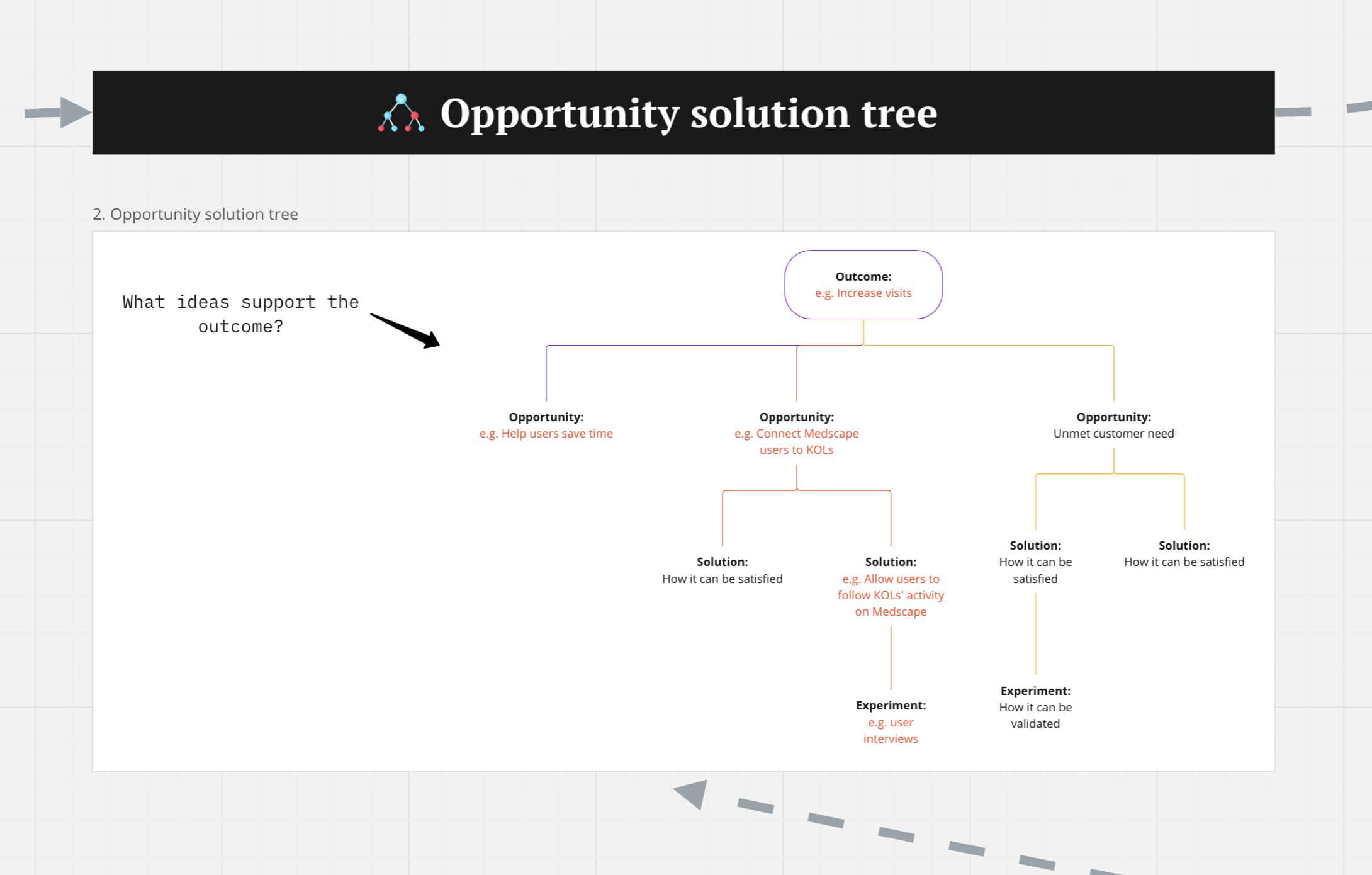
Sandrine created simple templates like this opportunity solution tree to help introduce continuous discovery to her team. Click the image to see a larger version.
It was around this time that Sandrine decided it would be more impactful if she could have her team go through the Product Talk Academy Master Class. While she wasn’t able to put all product people from the organization through the class, she began putting together trios across product management, design, and tech so they had several trios who were trained and they could use their progress as a proof of concept to show others in the organization that it worked. The idea was that the teams that had gone through the training could, in turn, train others within the product organization, slowly but surely getting everyone to engage in continuous discovery.
The Continuous Discovery Adoption and Implementation Curve
Looking a bit more closely at her company’s continuous discovery journey, Sandrine says there were a few main phases of adoption and implementation.
Phase 1: Raising awareness and getting started
“Even before we got into the Master Class, I wanted teams to get started with some of the concepts of the methodology, such as running interviews—as opposed to UX designers running them alone—and use some templates in Miro to engage practically with the method,” says Sandrine.
After reading Continuous Discovery Habits and the Product Talk blog, she started to raise awareness and get buy-in from top management (in order to secure funding for the Master Class). Every time she had the opportunity in meetings or one-on-ones, she’d raise the topic and explain what she was hoping to do.
At the same time, Sandrine also built simple templates in Miro based on what she’d learned from the book. “This template was less detailed than the one that was shared with us during the Master Class, but it enabled me to start raising awareness and explaining the concepts of continuous discovery to the team,” says Sandrine.
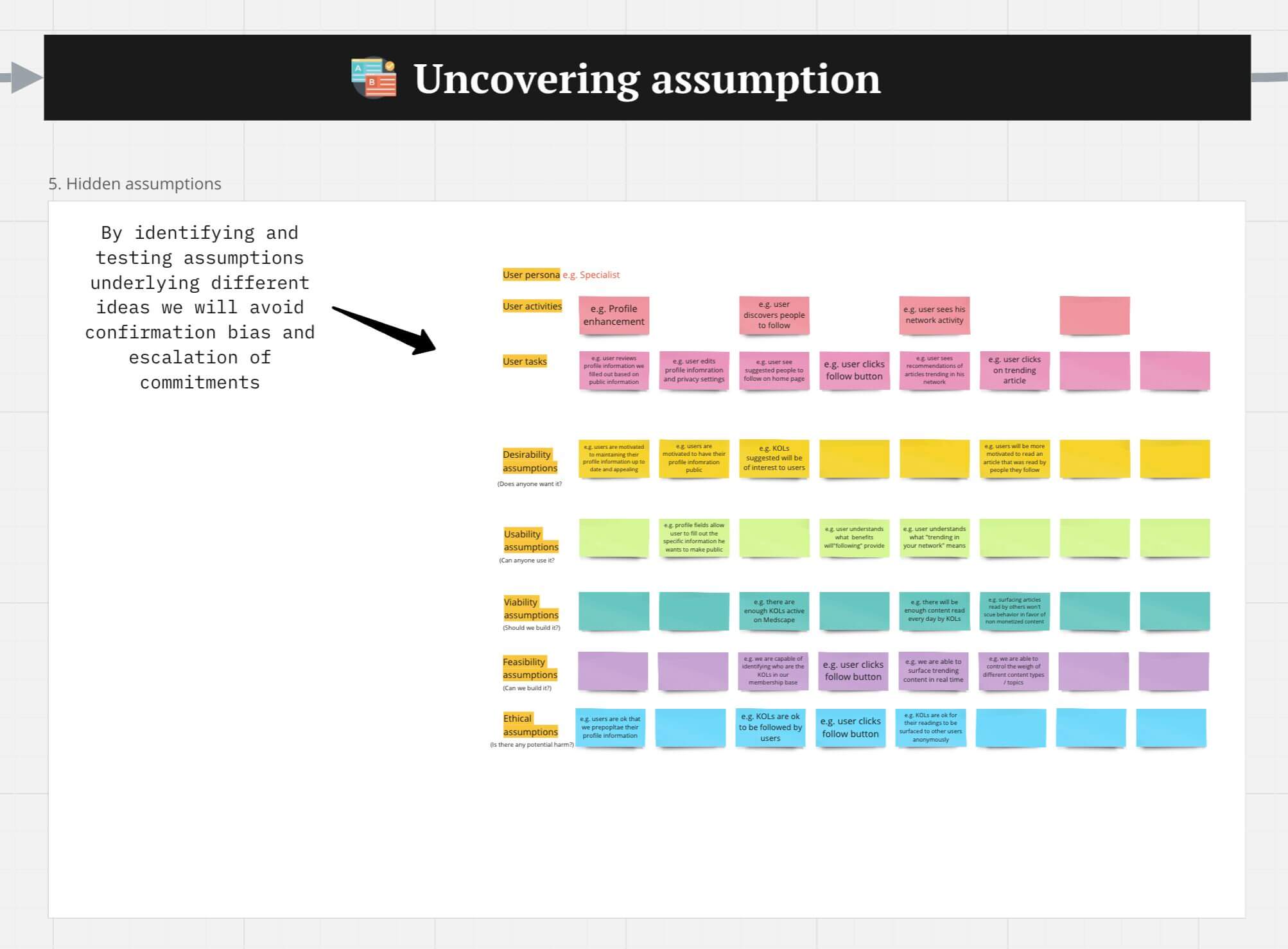
Another example of a template Sandrine built in Miro to help illustrate the concepts from Continuous Discovery Habits. Click the image to see a larger version.
Phase 2: Participating in the Master Class
When selected team members joined the Master Class, everyone was enthusiastic about learning further and getting their questions answered. At this point, they started to use the “official” template from Product Talk. While some teams continued using the original templates, Sandrine encouraged them to switch to Teresa’s template. “It is way more complete and showcases examples that teams can easily relate to in order to understand the concepts,” she says.
Sandrine adds that classes with Product Talk instructor Hope Gurion helped them grasp the different concepts and practically apply them to their own business priorities. “Having the courses spread out over several weeks helped the teams put the concepts into practice between each session and get the good habits in motion.”
Having the Master Class courses spread out over several weeks helped the teams put the concepts into practice between each session and get the good habits in motion. – Tweet This
Phase 3: Fine-tuning their set of tools
The product team continued to improve their tool kits over the following weeks and months. They were already using Miro for many other product activities, but with widespread adoption of continuous discovery, they increased their usage and even switched to an Enterprise plan.
In fact, they became such power users that Miro recently filmed a case study showcasing WebMD’s use of the tool to power their product organization.
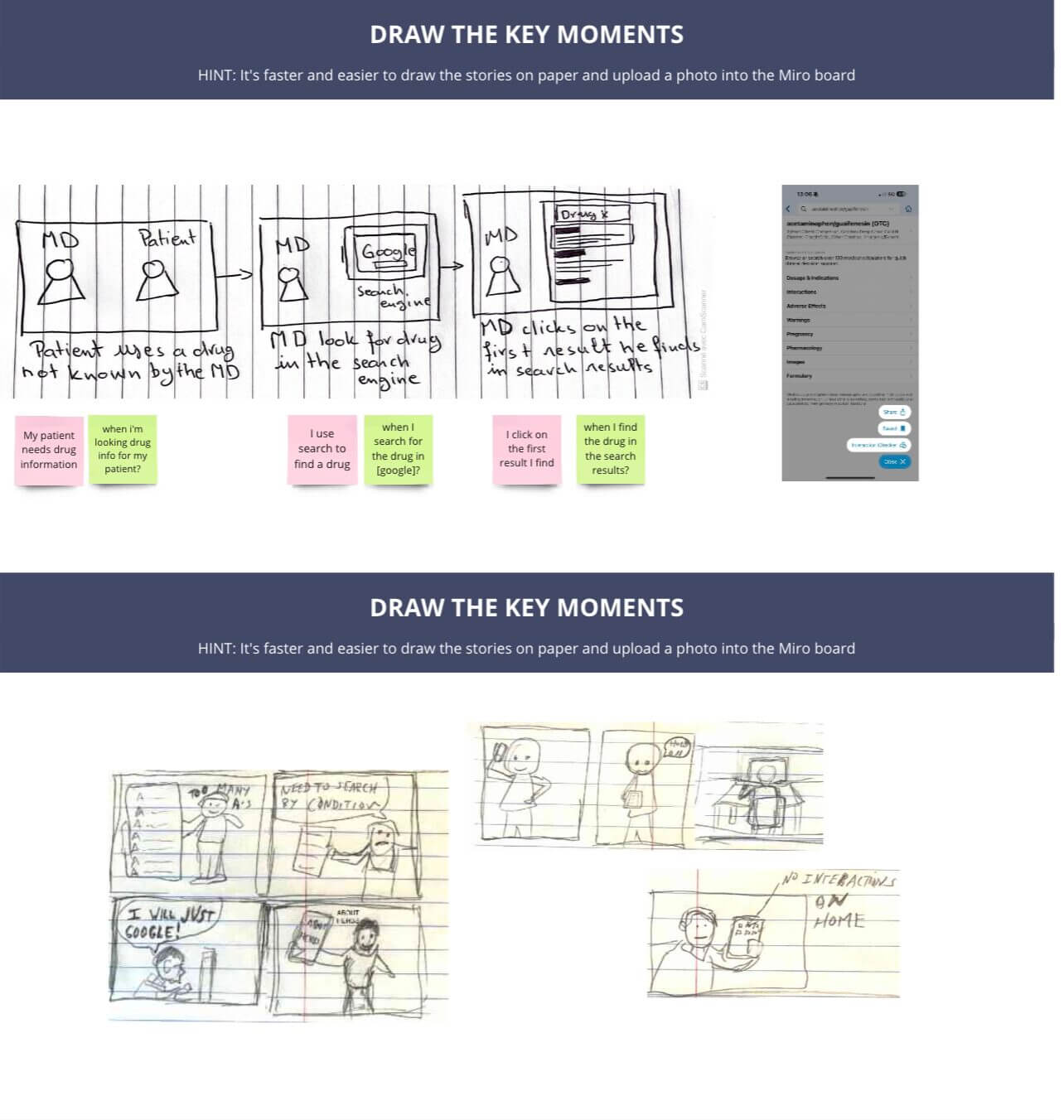
WebMD’s product teams have begun using templates in Miro to guide all aspects of continuous discovery, such as story mapping, as shown here. Click the image to see a larger version.
Phase 4: Improving the application of all the concepts through coaching and sharing
Sandrine admits that this phase never really ends—it’s a continuous process, especially since new trios keep joining. In order to encourage adoption of continuous discovery, Sandrine has started a discovery coaching session every other week, inviting Master Class participants to share their progress or present their research activities.
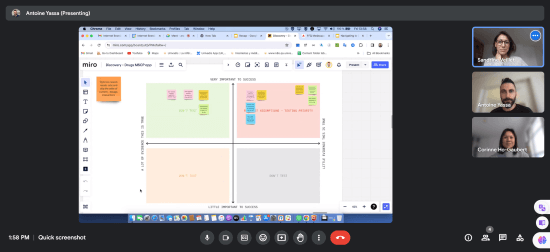
Sandrine started running discovery coaching sessions to encourage Master Class participants to share their progress or present their research activities.
“This created a good cadence and put a bit of ‘pressure’ on the teams to actually continue using the methodology beyond the Master Class,” says Sandrine. “My fear was that—like many training sessions—teams would gradually drop the good habits. This was also a way to come back to some concepts that were not fully understood or were harder to implement in the reality of our business.”
Sandrine has observed that product teams have more easily adopted some discovery habits than others. They were quick to interview customers, story map solutions, and identify assumptions, but she saw less rigor in other areas.
During group coaching sessions, Sandrine chooses a random team or two and asks them to share their discovery board and walk everyone through it. “This allows me to spot if a concept is not well understood or applied. For instance, I was able to identify that assumptions were labeled as questions or that trios did not define upfront success criteria for assumption tests,” says Sandrine. “In those cases, I can re-emphasize the importance of a concept or re-explain it, ideally showcasing the work of another trio for practical examples. I may also share one of Teresa’s articles in our Google Space as a follow-up.”
Phase 5: Involving stakeholders in discovery
Sandrine believes it’s critical to raise awareness and get buy-in from stakeholders in this methodology. She has tapped into WebMD’s internal TED Talk program to achieve this. She explains, “These are sort of mini TED Talks we organize on a monthly cadence to inform the rest of the organization about specific initiatives.”
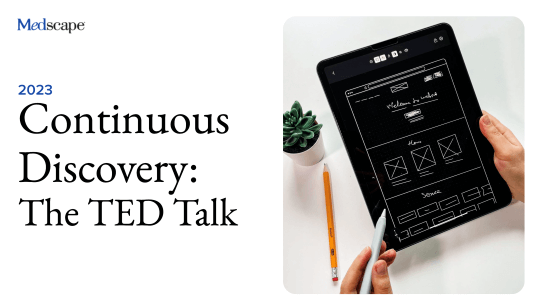
Sandrine developed an internal TED Talk to introduce continuous discovery concepts to her broader organization.
In addition to the TED Talk, Sandrine has looked for other ways to involve broader stakeholders in actual research activities. For those who are not part of the core trio, Sandrine wants to make sure they agree on outcomes, have the ability to learn about the opportunities they’ve heard from users, and can chime in on the desirability or viability of assumptions.
“This fosters deeper collaboration and more alignment along the way and they get to better understand how product management works from the inside, as opposed to the old model where some stakeholders would come up with an idea and ask the product team to implement it,” says Sandrine.
Plus, when product managers are deeply connected to their customers, focused on outcomes, and supported by the continuous discovery methodology, they feel more confident in their interactions with stakeholders. “They can reorient feature requests toward an outcome-oriented discussion and the opportunities they’ve identified,” says Sandrine.
Phase 6: Training more teams
Since there were only 20 participants in the initial Master Class, Sandrine created, with key members of the team, an internal training program to scale up this skill set among the broader product community across the company. “I wanted to further instill this mindset across the organization and get better alignment on how to work more effectively,” says Sandrine.
They have already trained an additional 20–30 people, including those outside of Sandrine’s reporting lines. “This brought an even larger group of product people to our discovery community to share ideas and tips on effective discovery,” Sandrine adds.
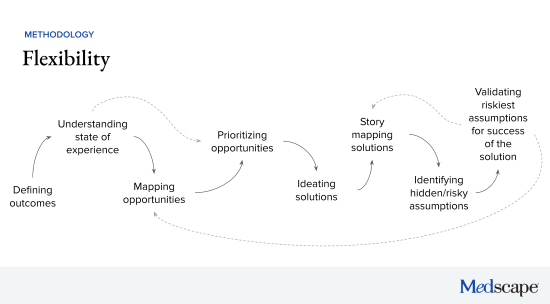
Sandrine created internal training to introduce the broader product team to core concepts of continuous discovery so they could all benefit from the Master Class learnings.
The Impact of the Master Class
Since going through the Master Class and taking the additional steps outlined in the previous section, Sandrine has observed significant changes within the product team. They’ve started to apply the templates—both Sandrine’s simplified version and the one that participants in the Master Class received from Product Talk.
The discovery sessions where Sandrine reviews core discovery concepts and asks product teams to walk through their recent discovery activities continue to be well attended. “I think we have 50 people coming each month,” says Sandrine.
She admits that she’s been experimenting with finding the right format since it can be challenging with geographically distributed teams who don’t know each other well. Asking one team to open their Miro board and walk through their recent discovery activities has been a great springboard for conversation.
Prior to the Master Class, product managers were not interviewing and they were relying on the product designers to do that work. But now they are actively interviewing customers using a variety of methods, including using in-product survey tool Survicate to recruit customers or run one-question surveys. They also use SurveyMonkey to run more traditional surveys and UserInterviews, which has been especially helpful in connecting them with the physicians they need to interview to discover opportunities or validate assumptions.
Sandrine sees the value in these regular touchpoints with customers. “The product managers have been really exposed to physicians, to our customers. Even though before they were maybe looking into the analytics or running surveys, it’s still completely different when you have a physician in front of you explaining the daily tasks that they have to do. This has led to a much bigger understanding and knowledge of their audience.”
Even though before PMs were looking into analytics or running surveys, it’s still completely different when you have a customer in front of you. – Tweet This
Reflecting on the Master Class experience, Sandrine says, “I think it’s been super helpful in giving them a sort of recipe to go through discovery, a step-by-step process that they can refer to understand how they should identify the problems.”
Ongoing Challenges with Adopting Discovery
Sandrine is quick to point out that product teams within WebMD continue to face challenges in their discovery journey. “I would say all of my teams apply the method with little gaps here and there,” she says.
A few of the areas where she sees room for improvement include getting teams to test one particular aspect of a solution rather than testing it end-to-end, set up success criteria at the appropriate scale, and share their work—no matter how imperfect—with others. “I think many of them are happy to attend and listen and see what others are doing, but they’re not necessarily comfortable to share their boards with the 50 other people in the meeting.”
One approach Sandrine plans to try out to overcome this hurdle is creating breakout rooms that are moderated by Sandrine’s direct reports. This way, participants will be sharing with a smaller group and this will help ease some of the pressure they might be feeling.
Some teams outside of Sandrine’s direct reporting lines have attended training sessions, but not yet started to adopt continuous discovery habits. “For those teams, their stakeholders are more directive in terms of what they want and how they want it, so it’s a bit more challenging for them.”
Similarly, Sandrine observes that tech teams tend to be more hesitant to participate. “Some are more vocal and participate more, but some are a bit more passive in the discussions. We’re trying to work on that.”
Key Learnings and Takeaways
While Sandrine believes there’s still plenty of work to do, she’s been inspired by what her team has accomplished so far. Reflecting on the Master Class and her efforts to introduce continuous discovery, Sandrine says, “My biggest advice is to not be afraid to get started, even if it’s not pixel perfect. Like everything we do in product, what we want is to learn fast to improve.”
Don’t be afraid to get started, even if it’s not pixel perfect. Like everything we do in product, what we want is to learn fast to improve. – Tweet This
Accept that in the early stages, your team won’t get everything right, they might not be as continuous in their interviews as you’d like them to be, and they might still be spending too much of their time on delivery. “Any behavioral change takes time, so it’s a long-term commitment that one needs to make to develop and scale that skill set,” says Sandrine.
Sandrine also emphasizes the importance of involving stakeholders in your extended trio or team. “One of the key challenges many product teams have is this constant tension between what they think is the right opportunity and what other groups think is the right priority,” says Sandrine.
“A lot of the command and control behavior some stakeholders or senior managers may be tempted to have towards product teams comes from a lack of trust and misalignment,” she explains. “One of the great things about involving stakeholders in our product discovery activities is that it fosters this trust factor and alignment on the outcomes, priorities, and solutions.”
Finally, Sandrine reminds leaders of your particular responsibilities: “As a product leader, you need to champion this change by creating the conditions that will enable your teams to actually put it into practice.”
As a product leader, you need to champion this change by creating the conditions that will enable your teams to actually put it into practice. – Tweet This
This might involve things like repeating yourself over and over across the organization on the need to change your product discovery habits or the need to include your tech teams or tech leader on the journey so that you can actually form trios.
Finally, there’s one tactical thing you can do: Make sure your teams can dedicate enough time to product discovery. “Free up their calendars and continue to coach them along the way and find ways for them to share and learn from each other, so they can feel the emulation and a sense of community of practice,” advises Sandrine.
Are you a product leader who wants help introducing continuous discovery across your product organization? Explore whether a Master Class is the right option for you!
The post Product in Practice: Bringing the Discovery Habits to WebMD appeared first on Product Talk.
Product in Practice: Bringing the Discovery Habits to WebMD was first posted on February 7, 2024 at 6:00 am.
©2022 “Product Talk“. Use of this feed is for personal non-commercial use only. If you are not reading this article in your feed reader, then the site is guilty of copyright infringement. Please let us know at support@producttalk.org.



